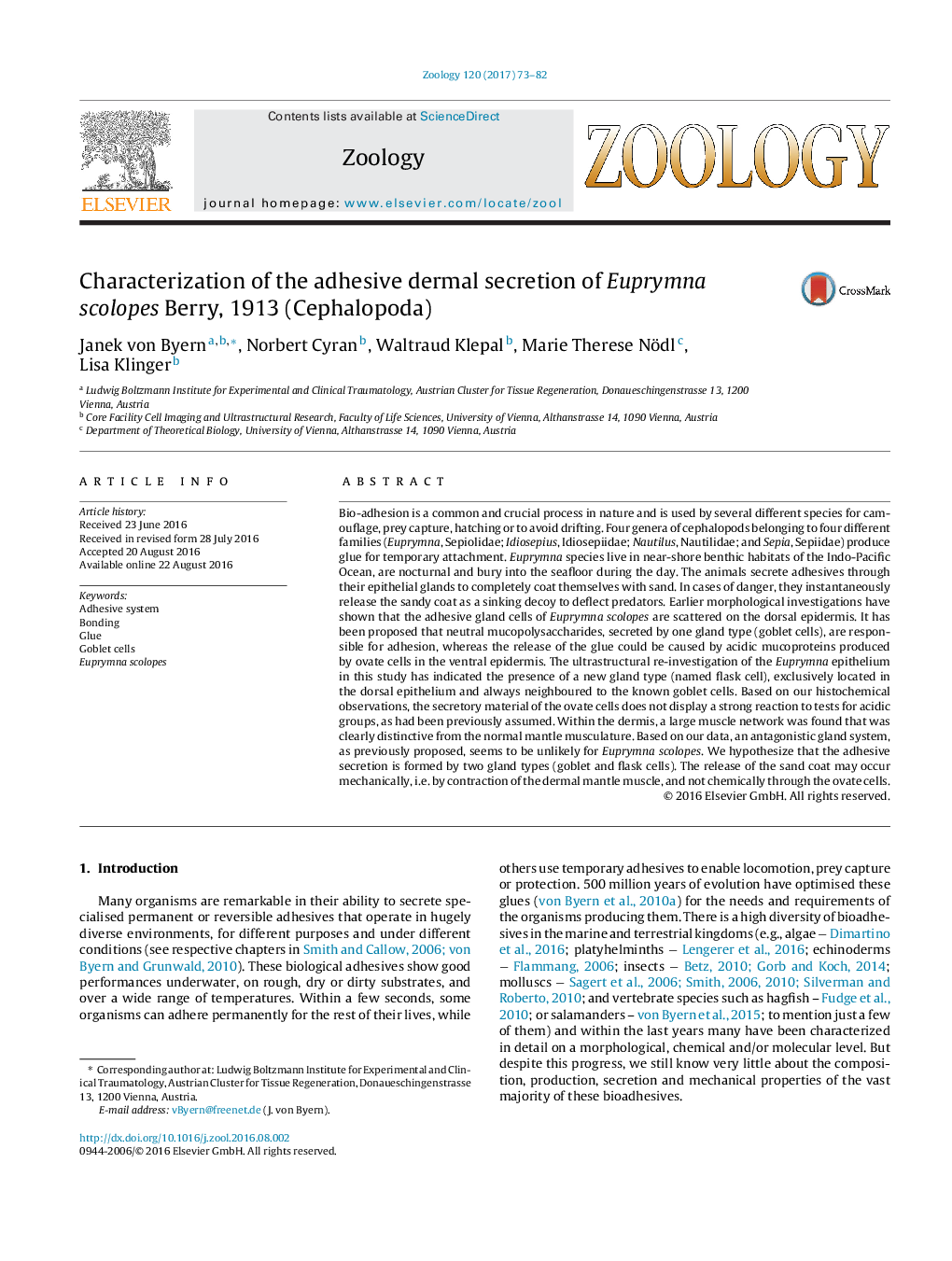| کد مقاله | کد نشریه | سال انتشار | مقاله انگلیسی | نسخه تمام متن |
|---|---|---|---|---|
| 5586530 | 1568638 | 2017 | 10 صفحه PDF | دانلود رایگان |

- A new gland type in the dorsal adhesive epithelium in Euprymna scolopes was found.
- A large muscle network within the dermal layer is described for the first time.
- The data contradicts a previously proposed antagonistic gland system.
Bio-adhesion is a common and crucial process in nature and is used by several different species for camouflage, prey capture, hatching or to avoid drifting. Four genera of cephalopods belonging to four different families (Euprymna, Sepiolidae; Idiosepius, Idiosepiidae; Nautilus, Nautilidae; and Sepia, Sepiidae) produce glue for temporary attachment. Euprymna species live in near-shore benthic habitats of the Indo-Pacific Ocean, are nocturnal and bury into the seafloor during the day. The animals secrete adhesives through their epithelial glands to completely coat themselves with sand. In cases of danger, they instantaneously release the sandy coat as a sinking decoy to deflect predators. Earlier morphological investigations have shown that the adhesive gland cells of Euprymna scolopes are scattered on the dorsal epidermis. It has been proposed that neutral mucopolysaccharides, secreted by one gland type (goblet cells), are responsible for adhesion, whereas the release of the glue could be caused by acidic mucoproteins produced by ovate cells in the ventral epidermis. The ultrastructural re-investigation of the Euprymna epithelium in this study has indicated the presence of a new gland type (named flask cell), exclusively located in the dorsal epithelium and always neighboured to the known goblet cells. Based on our histochemical observations, the secretory material of the ovate cells does not display a strong reaction to tests for acidic groups, as had been previously assumed. Within the dermis, a large muscle network was found that was clearly distinctive from the normal mantle musculature. Based on our data, an antagonistic gland system, as previously proposed, seems to be unlikely for Euprymna scolopes. We hypothesize that the adhesive secretion is formed by two gland types (goblet and flask cells). The release of the sand coat may occur mechanically, i.e. by contraction of the dermal mantle muscle, and not chemically through the ovate cells.
Journal: Zoology - Volume 120, February 2017, Pages 73-82